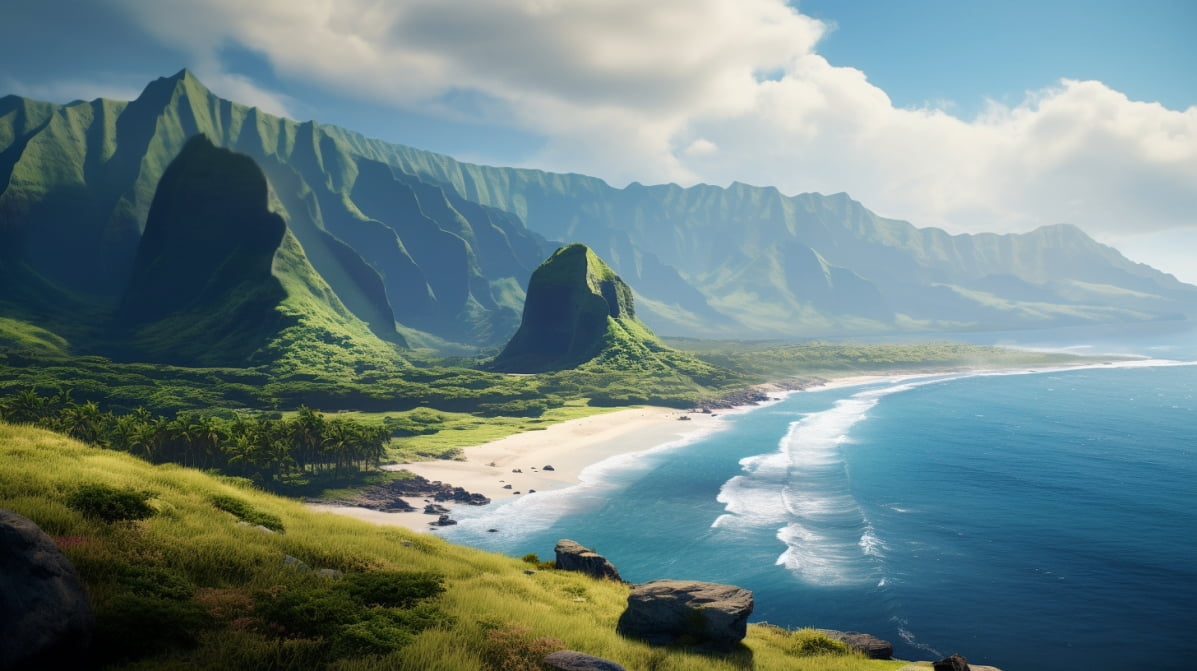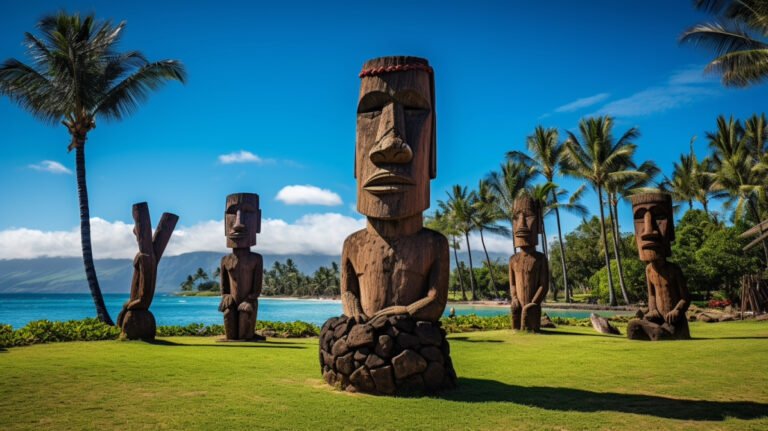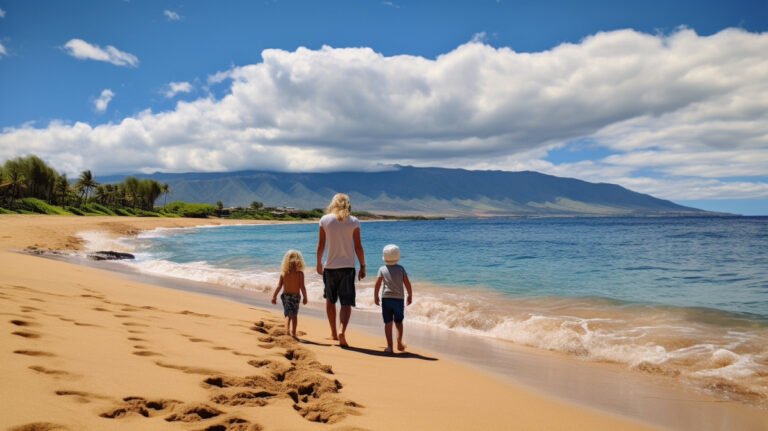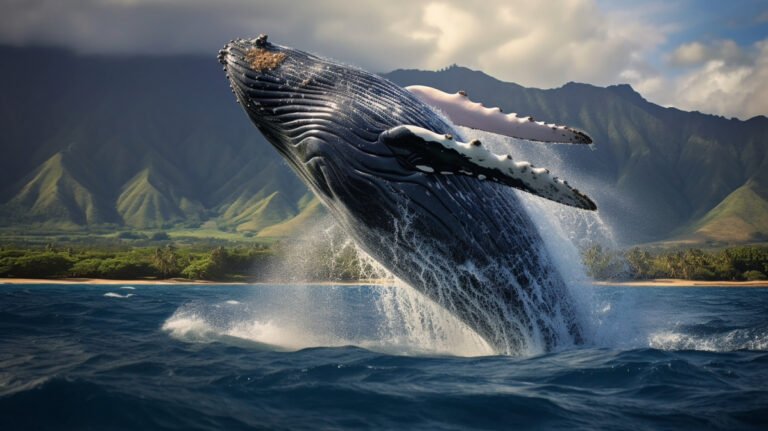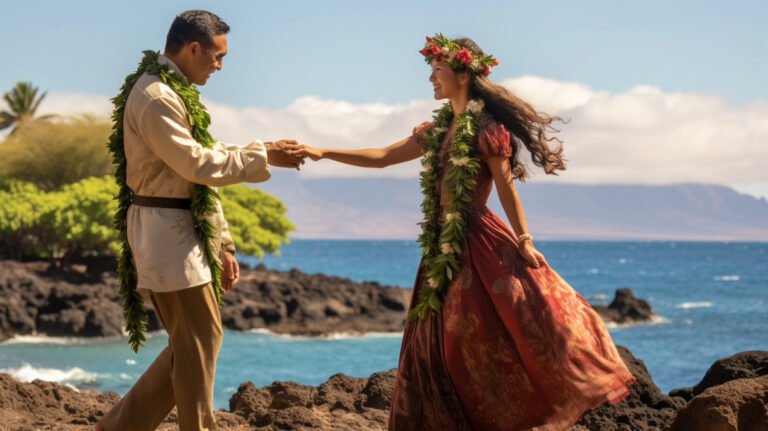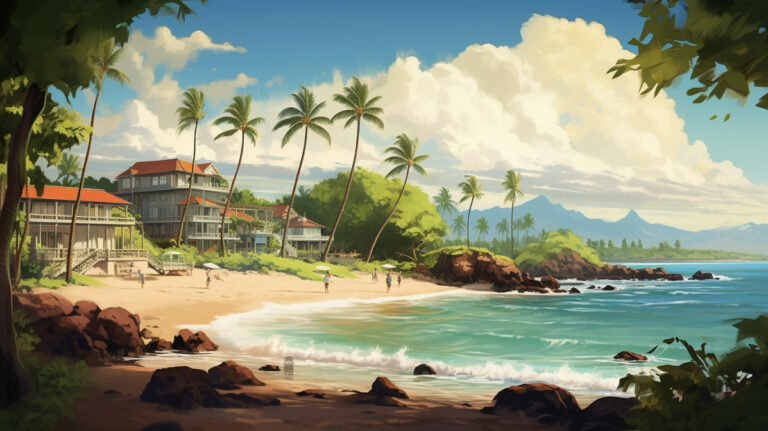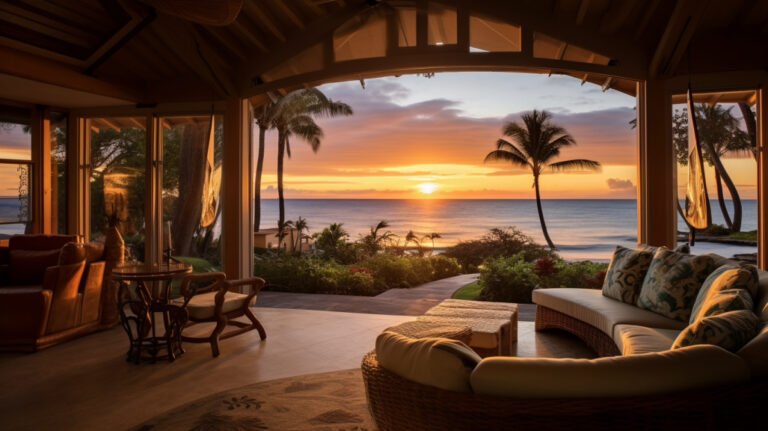Discover Maui’s Majestic Geography 🌺
Maui is a paradise on Earth, serving as a popular vacation spot due to its diverse landscape and breathtaking natural attractions. The island is home to a unique terrain, ranging from rainforests to volcanic peaks, beaches, and much more.
The geography of Maui holds great significance, shaping its tourism industry and providing the perfect backdrop for adventures and relaxation. In this article, we will explore Maui’s geography, including its physical features, location, climate, rainforests, volcanic peaks, and beaches.
Key Takeaways:
- Maui’s geography plays a crucial role in shaping its unique terrain and diverse natural attractions.
- The island’s geography includes rainforests, volcanic peaks, beaches, and more.
- Maui’s geography contributes to its thriving tourism industry and serves as the perfect destination for adventure and relaxation.
Understanding Maui’s Physical Geography
Maui’s physical geography is defined by its unique topography, landforms, and geographic features. The island is of volcanic origin and consists of two mountain ranges, with the Haleakalā and West Maui Mountains being the most prominent peaks.
The Haleakalā volcano, located in the eastern part of the island, is the highest point in Maui, rising over 10,000 feet into the sky. The West Maui Mountains, on the other hand, are older and smaller, with peaks reaching up to 5,700 feet above sea level.
Maui’s topography is characterized by steep slopes and deep valleys that were formed by erosion and volcanic activity over millions of years. Many of the island’s valleys were formed by streams and rivers that cut through the volcanic rock, creating deep gorges and canyons.
The island’s coastline is equally diverse, with sandy beaches, rocky cliffs, and rugged shorelines. The iconic Road to Hana, a winding scenic drive that passes through lush rainforests and along dramatic cliff edges, provides breathtaking views of Maui’s coastline.
Understanding Maui’s Physical Geography: Landforms and Features
| Landform/Feature | Description |
|---|---|
| Volcanic Peaks | Haleakalā and West Maui Mountains |
| Valleys | Iao Valley, Lahaina Valley, and others |
| Coastline | Sandy beaches, rocky cliffs, and rugged shorelines |
| Rainforests | East Maui and West Maui Mountains |
The physical geography of Maui has played a significant role in shaping the island’s unique terrain and diverse natural attractions. From the towering volcanic peaks and deep valleys to the dramatic coastline and lush rainforests, Maui’s physical features offer visitors a one-of-a-kind experience that cannot be found anywhere else in the world.
Discovering Maui’s Geographic Location
Maui is located in the central Pacific Ocean, approximately 2,390 miles west of California. The island is part of the Hawaiian archipelago and is the second-largest island in the chain. Maui lies between latitude 20° 47′ and 21° 03′ North, and longitude 156° 20′ and 156° 45′ West.
Maui’s location puts it at the crossroads of the Pacific trade winds, which bring moisture and precipitation to the island. The island is surrounded by the vast expanse of the Pacific Ocean and is home to some of the world’s most scenic beaches.
Unveiling Maui’s Climate
Maui’s climate is tropical and subtropical due to its location in the Pacific Ocean. The island experiences warm temperatures throughout the year, with average highs ranging from 79°F to 85°F.
One of the defining features of Maui’s climate is its rainfall patterns. The island’s wet season typically runs from November through March, with the driest months occurring from May through September. The windward side of the island receives the most rainfall due to the moisture carried by the trade winds, while the leeward side is more arid.
The temperature and rainfall patterns on the island vary based on location and elevation. Areas at higher elevations, such as the summit of Haleakalā, experience cooler temperatures and more precipitation than coastal regions.
Exploring Maui’s Rainforests
Maui’s rainforests are one of the island’s most cherished ecological treasures. These lush landscapes are home to a variety of unique flora and fauna, and play a vital role in maintaining the island’s delicate ecosystem.
The rainforests of Maui are located on the eastern side of the island, where the wet climate and rich volcanic soil create ideal conditions for plant growth. The largest of Maui’s rainforests is the Hāna Forest Reserve, which spans over 7,000 acres.
The Biodiversity of Maui’s Rainforests
Maui’s rainforests are home to a stunning array of plant and animal species. The towering canopy of trees provides habitat for rare birds like the Hawaiian honeycreeper and the Maui parrotbill, as well as numerous species of insects and butterflies.
The forest floor is equally diverse, with ferns, mosses, and wildflowers coexisting amidst the roots of the towering trees. Many of these plant species are endemic to Hawaii, meaning they are found nowhere else in the world.
The Significance of Maui’s Rainforests
Maui’s rainforests are more than just beautiful landscapes – they play a vital role in the island’s ecology. The dense vegetation helps to regulate the flow of water into Maui’s rivers and streams, which in turn provides freshwater for the island’s residents and wildlife.
Furthermore, the rainforests of Maui are crucial for maintaining the island’s soil health. The decomposing leaves and organic matter that fall to the forest floor provide nutrients that are essential for plant growth and soil fertility. Without these rainforests, the island’s delicate ecosystem would be severely impacted.
Scaling Maui’s Volcanic Peaks
Maui’s geography is shaped by its volcanic origins, and nowhere is this more evident than in its breathtaking mountain peaks. Haleakalā, the island’s highest peak, stands at an elevation of 10,023 feet and is one of Maui’s most popular attractions. The West Maui Mountains, a range of extinct volcanoes, dominate the island’s western coastline and offer stunning views of the Pacific Ocean.
The formation of these volcanic peaks is central to Maui’s physical geography. Haleakalā is a shield volcano, formed by the accumulation of overlapping lava flows over thousands of years. The West Maui Mountains, on the other hand, are a eroded remnants of a much larger volcano. Ongoing erosion from wind and rain has sculpted these peaks into their current form over millions of years.
Elevation and Significance
Haleakalā’s summit is an iconic symbol of Maui and holds significant cultural and spiritual importance to the Hawaiian people. Visitors can hike a variety of trails throughout the park, which offers stunning views of the sunrise and sunset over the crater’s rim. The West Maui Mountains are also significant cultural landmarks and home to ancient Hawaiian trails and settlements.
Interestingly, the elevation of Mauna Kea, the tallest volcano in the Hawaiian Islands, is actually greater than Haleakalā. However, because the majority of Mauna Kea’s mass is underwater, its summit elevation is only 13,803 feet, compared to Haleakalā’s 10,023 feet above sea level.
Overall, the volcanic peaks of Maui offer visitors a unique glimpse into the island’s geological history and cultural heritage. Scaling these towering peaks is an experience that should not be missed.
Exploring Maui’s Pristine Beaches
Maui is home to some of the most beautiful beaches in the world. With over 30 miles of pristine coastline, visitors to Maui can enjoy a variety of white sand, black sand, and red sand beaches.
The most famous beach in Maui is undoubtedly Ka’anapali Beach. This three-mile stretch of sand is located on the west side of Maui and is home to some of the island’s best resorts and restaurants. Visitors to Ka’anapali Beach can swim, snorkel, or simply lounge on the beach and soak up the sun.
Did you know? Ka’anapali Beach was once a retreat for Hawaiian royalty and is now a popular tourist destination.
Another popular beach in Maui is Wailea Beach. Located on the south side of the island, Wailea Beach is known for its calm waters and soft, white sand. Visitors to this beach can enjoy snorkeling, stand-up paddleboarding, and other water activities.
Fun Fact: Wailea Beach has been named one of the best beaches in the world by numerous travel publications.
If you’re looking for something a little more off the beaten path, head to Makena Beach. Also known as “Big Beach,” Makena Beach is located on Maui’s south shore and features a wide stretch of golden sand and crystal-clear water. Visitors can enjoy swimming, sunbathing, and hiking in the nearby area.
Tip: Makena Beach can be quite windy at times, so make sure to check weather conditions before planning your trip.
Maui’s beaches offer not only stunning scenery, but also a glimpse into the island’s geography. Many of the beaches are nestled against rocky cliffs or surrounded by lush vegetation, adding to their unique charm.
If you’re planning a trip to Maui, make sure to spend some time exploring the island’s beautiful beaches. Whether you prefer to relax and soak up the sun or partake in water activities, Maui’s beaches offer something for everyone.
Conclusion
In conclusion, Maui’s magnificent geography shaped by volcanic forces is integral to its idyllic charm. Lush rainforests, towering peaks, and pristine beaches create diverse natural wonders that inspire awe. The island’s climate, Pacific locale, and terrain nurture rich biodiversity.
Trek to Haleakalā’s summit, wander through valleys, lounge on golden shores – Maui offers limitless ways to embrace its natural splendor. Always take time to appreciate the geographic beauty surrounding you. Let Maui’s landscapes dazzle your senses.

